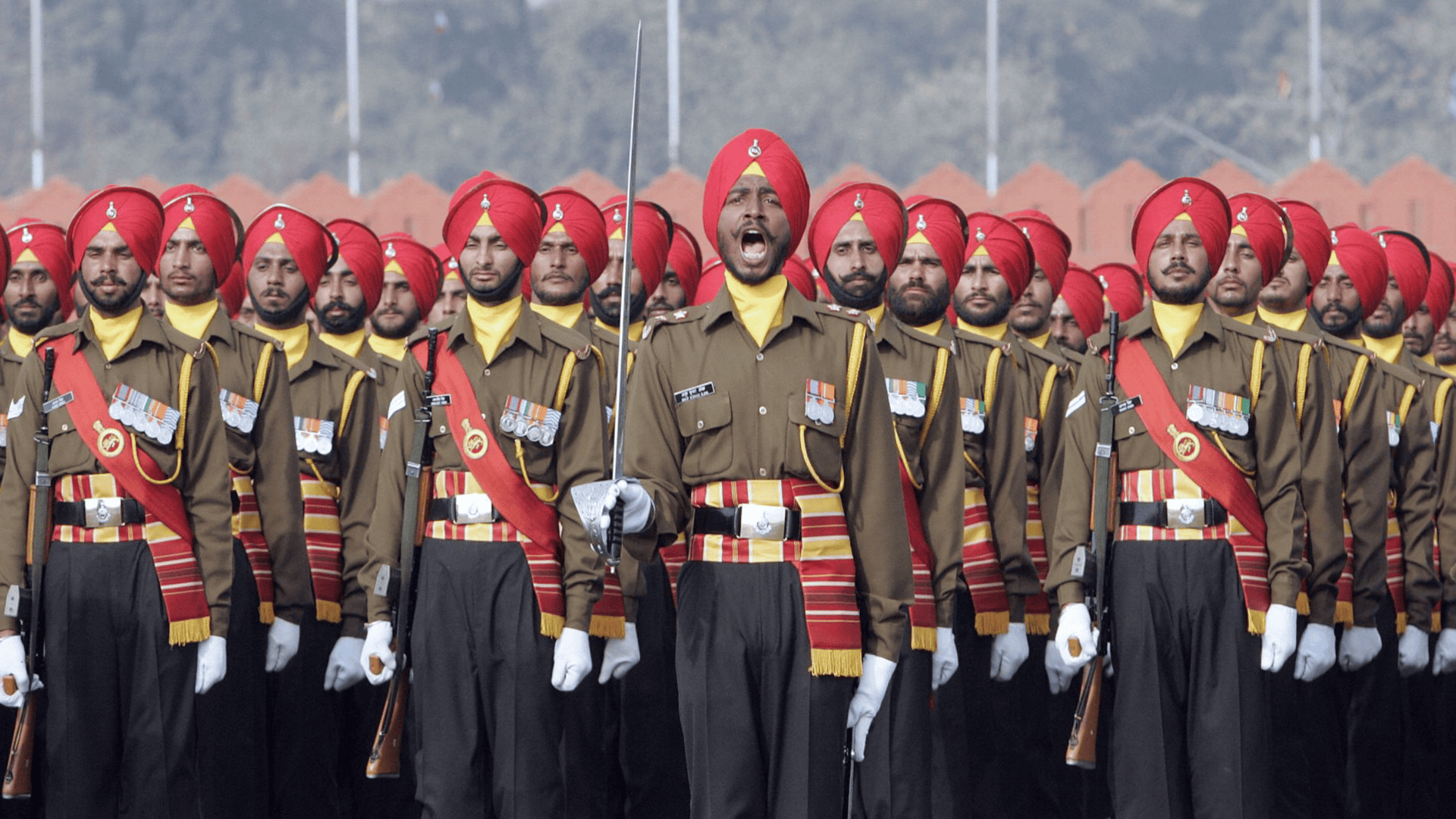Sikh Light Infantry Foundation Day: A Tribute to Courage, Devotion and Tradition
Key Highlights
- The Sikh Light Infantry was officially raised on 1 October 1941 during World War II.
- Its lineage is connected to the 23rd, 32nd, and 34th Royal Sikh Pioneers, all of which were composed of Mazhabi and Ramdasia Sikhs.
- The regiment has earned glory in major battles, including the Burma Campaign, Indo-Pak wars, and operations in Siachen Glacier.
- It upholds the powerful Sikh motto “Deg Tegh Fateh” and follows the war cry “Jo Bole So Nihal, Sat Sri Akal”.
- 23rd June is remembered for its symbolic integration of the old pioneer legacy into a modern infantry identity.
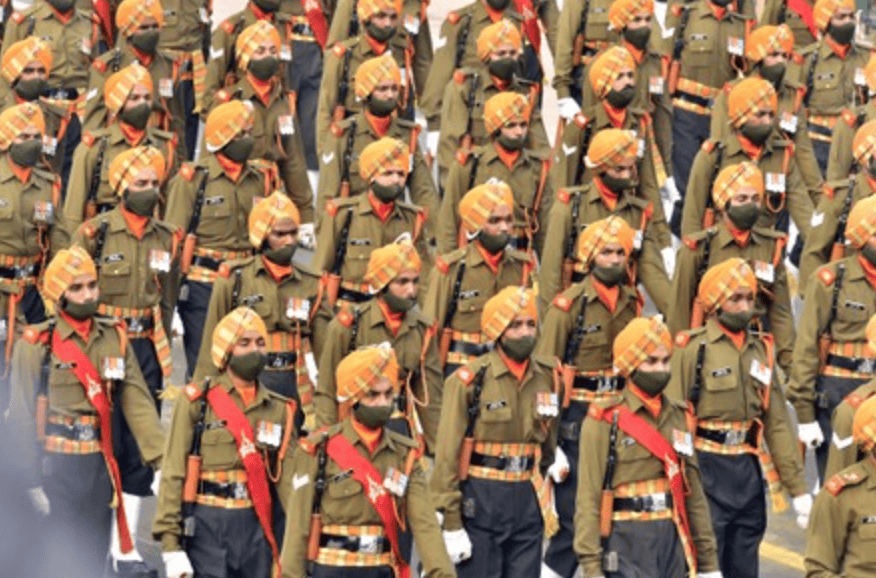
The Sikh Light Infantry Foundation Day is a deeply symbolic occasion that honours one of India's most revered infantry regiments. This day serves as a reminder of the courage, discipline and spiritual strength that the regiment has upheld for over eight decades.
With its roots tracing back to the British Indian Army and a legacy tied to the Sikh martial tradition, the regiment has evolved from a pioneer force into a formidable part of the Indian Army. It has stood tall in some of the harshest battlefields, from the jungles of Burma to the heights of Siachen.
This blog explores the origins, traditions, military achievements and cultural identity of the Sikh Light Infantry. It also sheds light on why 23rd June holds unique historical significance for the regiment, in addition to its official raising day on 1 October.
The Origins and Formation of the Sikh Light Infantry
The Sikh Light Infantry was formally raised on 1 October 1941 during World War II. However, its true roots go much deeper. The regiment draws its heritage from the 23rd, 32nd and 34th Royal Sikh Pioneers, which were established as engineering and support troops under the British Indian Army in the 19th century. These regiments had proven their mettle in various campaigns, including the Afghan Wars, Burma Expeditions and World War I.
When the need arose to form a highly agile and combat-ready infantry regiment comprising Mazhabhi and Ramdasia Sikhs, these pioneer units were merged, and the Sikh Light Infantry was born. The aim was to capitalise on their discipline, courage and adaptability to challenging terrains and guerrilla warfare.
The regiment’s formation also symbolised the British policy of martial race recruitment, recognising the resilience of these Sikh sub-communities. Despite their socio-economic marginalisation, these soldiers had long served with honour and distinction.
World War II and Early Combat Engagements
Shortly after its formation, the Sikh Light Infantry was deployed to the Eastern Theatre during World War II, particularly in Burma (now Myanmar). Facing off against the Japanese Army, the regiment operated in jungle terrain, often engaging in hand-to-hand combat and navigating supply shortages, diseases and unpredictable enemy movements.
The performance of the Sikh Light Infantry in this theatre earned the regiment several battle honours and recognition from British commanders. This campaign firmly established the regiment’s reputation for being mentally and physically resilient.
Post-Independence Battles and Military Contributions
After India’s independence in 1947, the Sikh Light Infantry became part of the Indian Army. Over the next several decades, the regiment continued to demonstrate heroism in both conventional warfare and high-altitude operations.
1947–48 War:
During the first Indo-Pak war over Jammu and Kashmir, the regiment played a crucial role in defending territories and securing strategic passes. Many of its jawans fought with unmatched valour under extreme conditions.
1962 Sino-Indian War:
The regiment was engaged along the Himalayan frontiers during the war with China. Despite limited resources and unfavourable terrain, its soldiers stood firm against a numerically superior adversary.
1965 and 1971 Indo-Pak Wars:
The regiment took part in multiple operations on both the western and eastern fronts. In the 1971 war, it contributed to India’s decisive victory and the creation of Bangladesh.
Siachen Glacier – Operation Meghdoot:
The Sikh Light Infantry was one of the first regiments deployed to the Siachen Glacier, the world’s highest battlefield. It has maintained posts at altitudes exceeding 20,000 feet, enduring sub-zero temperatures and constant threat from enemy fire.
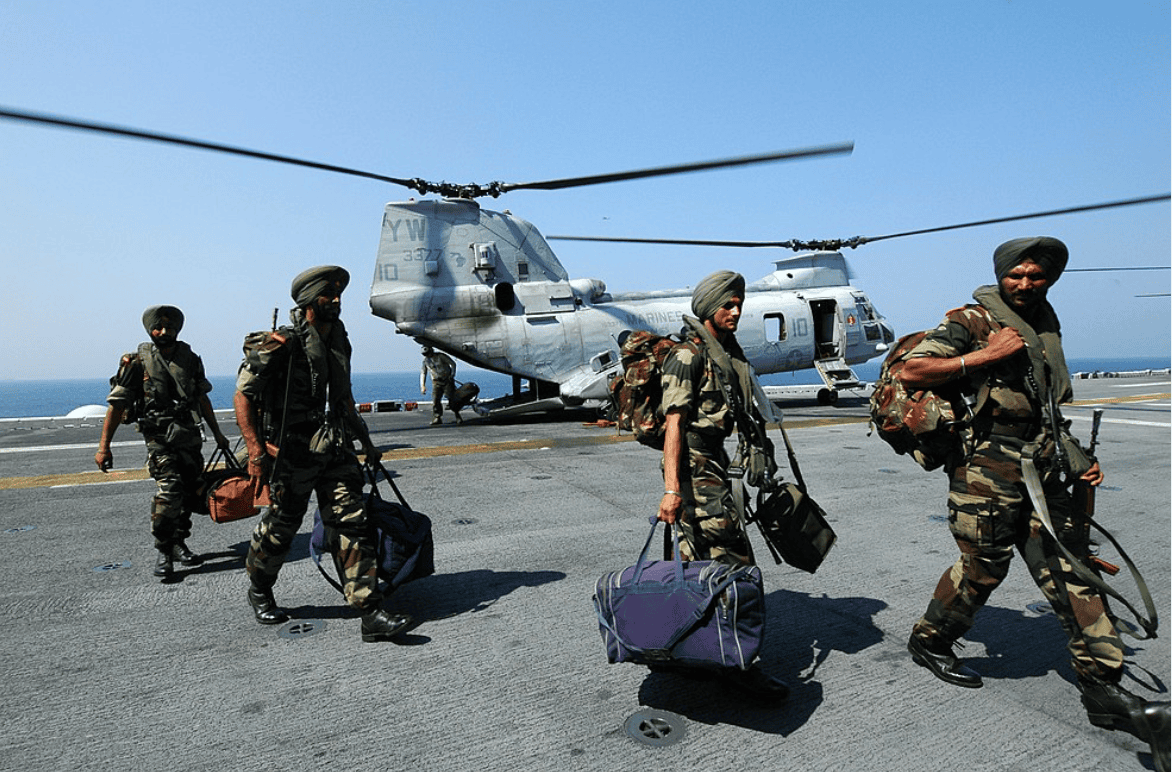
United Nations Peacekeeping:
Apart from domestic operations, the regiment has also served in UN peacekeeping missions across Africa and Asia. These deployments highlight its professionalism and discipline on the global stage.
Gallantry Awards and Honours
The Sikh Light Infantry has been recognised with numerous gallantry awards, reflecting the bravery and sacrifice of its soldiers. Some of the most notable honours include:
- Ashoka Chakra
- Maha Vir Chakra
- Vir Chakras
- Sena Medals
- Multiple battle and theatre honours from World War II, Indo-Pak wars and operations in Siachen and the North East.
These awards are not just military decorations but symbols of the regiment’s commitment to duty, honour and country.
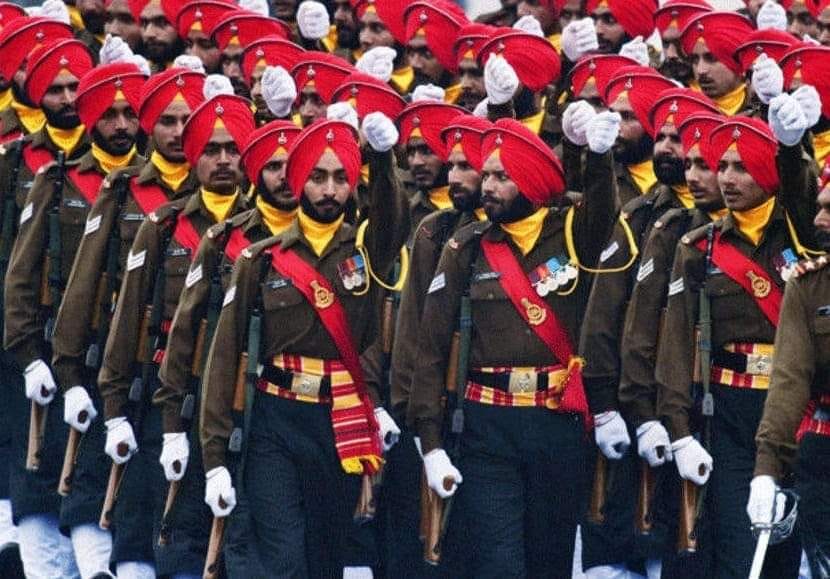
Regimental Motto, Insignia and War Cry
Motto: Deg Tegh Fateh
This powerful Sikh phrase translates to “Victory to Charity and Arms”. It signifies the dual duty of the Khalsa to feed the hungry and protect the weak. The motto embodies the spirit of selfless service, compassion and righteous warfare.
Insignia
The regimental insignia features a Chakram (circular weapon) over crossed Kirpans, representing Sikh martial heritage. It is a visual reminder of the regiment’s historical connection to the Khalsa warriors.
War Cry: Jo Bole So Nihal, Sat Sri Akal
This traditional Sikh battle cry means “Blessed is the one who proclaims, Truth is Eternal”. It is shouted with great fervour in parades, drills and combat situations, serving to boost morale and spiritual resolve.
Significance of 23rd June in Sikh Light Infantry History
Although the regiment was officially raised on 1 October 1941, 23rd June holds special emotional and historical value. This date is observed to mark the integration and official recognition of the Sikh Pioneers’ legacy into the identity of the Sikh Light Infantry.
It celebrates the formal acceptance of a rich martial lineage and the evolution of a modern, inclusive and highly capable combat force. For serving and retired personnel, 23rd June is a day of pride, remembrance and regimental solidarity.
The Regiment Today: Honour Meets Modern Warfare
Today, the Sikh Light Infantry continues to stand as one of the most reliable infantry regiments of the Indian Army. Based at the Sikh Light Infantry Regimental Centre in Fatehgarh, Uttar Pradesh, it remains a symbol of discipline, tradition and modern military excellence.
The regiment regularly participates in:
- High-altitude border patrols
- Counter-insurgency operations
- International military drills
- Republic Day parades
- Joint exercises with foreign armies
It continues to recruit from its traditional base of Mazhabhi and Ramdasia Sikhs, ensuring cultural continuity and a sense of brotherhood among the ranks.
A Living Legacy of Valour and Virtue
The Sikh Light Infantry Foundation Day is not just a military commemoration. It is a celebration of an undying spirit rooted in faith, discipline and sacrifice. From its inception during the turbulence of World War II to its modern avatar defending India's borders, the regiment has always risen to the occasion.
With its heart in Sikh tradition and eyes on the nation’s future, the Sikh Light Infantry remains a shining example of military excellence and spiritual strength. On this Foundation Day, and every 23rd June, we salute the warriors of this proud regiment who serve with honour, courage and unmatched commitment.
FAQs
1. What is Sikh Light Infantry Foundation Day?
It is the day that marks the formation of the Sikh Light Infantry regiment, officially raised on 1 October 1941.
2. Why is 23rd June important for the Sikh Light Infantry?
23rd June commemorates the integration of the 23rd, 32nd and 34th Sikh Pioneers into the Sikh Light Infantry, recognising their legacy.
3. What does "Deg Tegh Fateh" mean?
It means “Victory to Charity and Arms” and reflects the dual responsibility of the Khalsa to feed and protect.
4. What is the war cry of the Sikh Light Infantry?
The war cry is “Jo Bole So Nihal, Sat Sri Akal”, a Sikh religious chant that boosts morale and unity.
5. Which wars has the regiment participated in?
The regiment has fought in World War II, the 1947–48, 1962, 1965 and 1971 wars, and operations like Siachen and UN missions.
6. Where is the Sikh Light Infantry Regimental Centre located?
It is based in Fatehgarh, Uttar Pradesh.
7. Who are the primary recruits of this regiment?
The regiment primarily recruits Mazhabhi and Ramdasia Sikhs from various parts of India.
8. What makes Sikh LI different from other regiments?
Its unique spiritual roots, high-altitude capability and light infantry agility make it a distinct force.
9. Has the regiment won any gallantry awards?
Yes, including the Ashoka Chakra, Maha Vir Chakra, Vir Chakra and several Sena Medals.
10. Is the Sikh Light Infantry still active today?
Yes, it continues to serve actively on national and international assignments, upholding its legacy of valour.
Related Articles
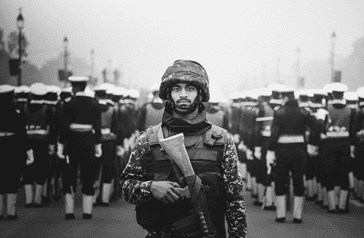
Every year on 16 October, India celebrates NSG Raising Day, honouring the National Security Guard — the nation’s elite counter-terror and special operations unit. udChalo salutes the courage of the Black Cats, standing with them and their families through trusted travel, housing, and lifestyle support.
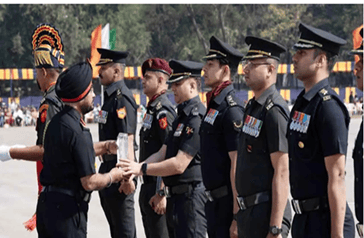
October 15 marks EME Corps Day, honouring the technical excellence and service of the Corps of Electronics and Mechanical Engineers. udChalo helps defence personnel travel seamlessly while serving the nation.
The 78th EME Corps Day celebrates the Indian Army’s technological strength — the engineers who ensure every mission runs flawlessly. With innovation as their weapon and courage as their fuel, the EME stands as the true power behind India’s defence might.
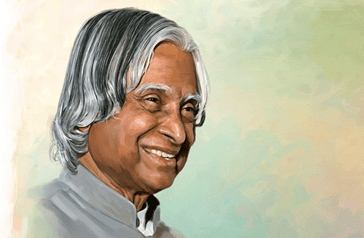
October 15 marks World Students Day, honouring Dr A.P.J. Abdul Kalam. Defence students can draw inspiration from his life, and udChalo helps empower their journey through tailored travel and educational support.
Related Post

Every year on 16 October, India celebrates NSG Raising Day, honouring the National Security Guard — the nation’s elite counter-terror and special operations unit. udChalo salutes the courage of the Black Cats, standing with them and their families through trusted travel, housing, and lifestyle support.

October 15 marks EME Corps Day, honouring the technical excellence and service of the Corps of Electronics and Mechanical Engineers. udChalo helps defence personnel travel seamlessly while serving the nation.
The 78th EME Corps Day celebrates the Indian Army’s technological strength — the engineers who ensure every mission runs flawlessly. With innovation as their weapon and courage as their fuel, the EME stands as the true power behind India’s defence might.

October 15 marks World Students Day, honouring Dr A.P.J. Abdul Kalam. Defence students can draw inspiration from his life, and udChalo helps empower their journey through tailored travel and educational support.

